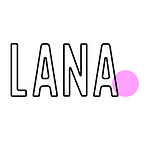I was in elementary school when I had “Turly” which you can tell from her name that she’s a turtle. I hadn’t had any pets since she died. For the past couple of days, I worked on my first project for the UX course by Misk Academy. We had a quick meeting to generate an idea but as usual, ideas fly away from your head once you’re asked “Do you have any idea?”. My partner Zahraa Nadhem suggested that we provide a solution for pet owners, so I was like Hmm ok. To be honest, I wasn’t really excited because I thought I won’t relate at all. But when we started our research everything changed! Researching and talking to users made me feel as if I’m a pet owner myself.
I’m glad we were introduced to Miro throughout the course. It’s an online virtual platform for collaborative work. It really helped us since me and my partner were distanced.
Our plan was divided into 10 main steps. We’ll go through each right away.
1.Putting first thoughts and writing down interview questions:
2.Conducting interviews:
Three key points were reached from the interviews:
From the users’ tone of answering the questions, we could tell that they’re so emotional toward their pets. They’re feeling guilty about messing up feeding and worried about their pets’ health. Although they were concerned they weren’t that much educated about the right way of taking care of their pets. Lack of awareness about pets’ health is definitely an issue to be pointed at. Also, they never tracked the feeding process through an App though they loved the idea.
3.Forming Affinity Mapping:
As you can see in the Affinity Mapping, we formed four groupings out of the answers: Struggles, Behavior, Eating Habits, and Owners. Through the process of sorting the answers, we were able to detect patterns and build a better picture of the problem.
Findings:
- 60% of users are randomly feeding their pets. Therefore, we decided to add a schedule to the pet profile.
- 90% of the users shared taking care of the pet with multiple members of their family. A great feature in the app would be the shared profile to organize things and prevent double feeding or mixing feeding time.
- Pets and their numbers of meals varied between the users. As a result, the App must include varied options for pets and numbers of meals.
4.Background research
There are many Apps in the market that provide solutions to pet owners. We found some such as Kibble, Meal Time, and Pet Notes.
Our app would be different in the following features:
- Focused on feeding (meals, diets, schedule, and reminders)
- Multiple types of pets
- Pet profile is shared with members
- Pet Meals could be assigned to members
5. Writing the problem statement
The following sketch was done to visualize the concept including the current situation and proposed solution. Actually, the three pets represented were real case scenarios that users told us about during the interviews.
Reaching to this point we were ready to define the problem along with the solution. So the following is the problem statement:
“Pet owners miss tracking their pets feeding, as a result feeding time is mixed up which leads to health issues. Our solution should provide a way for pets’ owners to track their pets’ feeding habits.”
6. User Workflow
Based on the findings of the previous methods, we formed the following Workflow:
7. Lo-fi Wireframe
We did a Low Fidelity Wireframe to define the screens of the app and the main layout.
8. Hi-fi Wireframe
After the research, we reached the point that made us capable of designing a high fidelity wireframe that we’ll use later in the paper prototyping.
If you’re still here... You just made my day :D Thank you for sticking this far!
9. Paper Prototype
We tested the following prototype on 4 users.
10. Iteration
Finally, we analyzed user interaction with our paper prototyping, and based on their feedback we decided that we need an iteration to change some things for a better experience.
- In the Intro Page, we can add a pet footprint to the logo or something that symbolizes pets to show that it’s an app related to pet feeding because there was a user that thought the app was a food service app.
- As mentioned before in the findings of the interviews, many users have a bit of information regarding taking care of their pets. And we saw that again during the testing time. So we decided to add a small icon where the user can click and get an explanation. (For example the Diet option).
- In the Pet Profile, The “Share” button will be changed into “Add Member” to make it clear for the user that multiple members can share the same Pet Profile.
- One user was surprised that there is a frog in the pet option. That made us do research on the most common pet ownership internationally. since the frog wasn’t one of them, it will be removed.
In conclusion, owning a pet comes with its responsibility. The feeding process might be a struggle for some pets owners, but we believe “FEED ME!” can give great help, providing a simple feeding tracking system for the whole family taking care of the pet.
Finally, as a UX student, I’d like to hear your feedback and advice.
THANK YOU! :D
